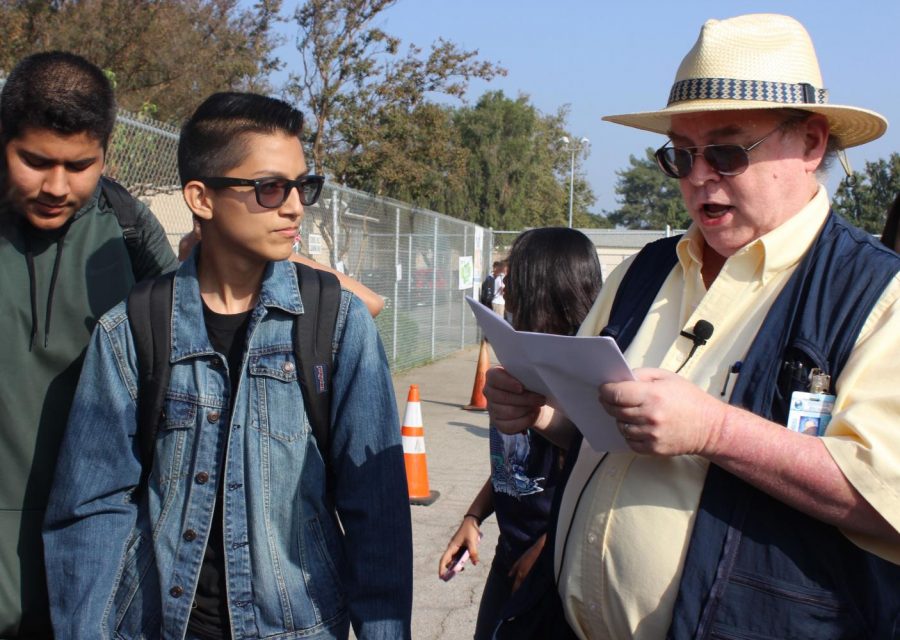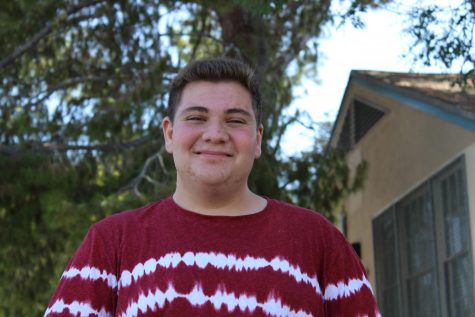Students participate in annual Great California ShakeOut
Sophomores Christopher Sarenana and Jason Echeverria listen as science teacher Stephen Schaffter takes roll. Schaffter organizes the school’s emergency preparedness plans.
October 19, 2017
With California’s San Andreas Fault long overdue for the next big earthquake, concerns have been raised as to how prepared residents are for such a natural disaster.
“The San Andreas Fault apparently has a historical tendency to have large quakes in both the southern and northern parts of the state,” science teacher Stephen Schaffter said. “However, other faults have been more active in the southern part of the San Andreas Fault so we may not see that ‘big one’ like we would expect it to in the past.”
Today, students were among one of the many millions of people across the state who participated in the Great California ShakeOut, where they exercise their preparedness in the case of a large magnitude earthquake. This statewide drill began in 2008 and takes place every Oct. 19 to so people can practice how to drop, cover and hold on during an earthquake.
Recent earthquakes in Mexico have proven that fault lines may be active. Within a span of just a few weeks, Mexico was hit with two big earthquakes, a 7.1 on Sept. 19 with the epicenter in Oaxaca and an 8.1 magnitude earthquake on Sept. 8 with the epicenter in Puebla. These earthquakes have raised concerns for residents all across California, who are left questioning when the ‘big one’ will strike their city.
The San Andreas Fault, which is past overdue for eruption, is a fault that extends about 800 miles across California. This fault can erupt at any given moment, whether or not residents are prepared for such a disaster.
“I am worried because I don’t have enough food, but I would try to save drinking water as much as I can to survive for a week or longer than that,” senior Janna Desamito said. “We don’t know when it’s going to happen because earthquakes are very unpredictable.”
This is an issue that has affected many people statewide. Schools across California have prepared emergency plans in case of an earthquake or other natural disasters.
“I think that we are very well prepared to handle search and rescue, medical, fire suppression or physical needs of kids,” Principal Deb Smith said. “We have excellent water resources and by counting the supply of multiple days of food in the cafeteria, we’re good.”
There are full set ups of first aid kits around the school in various locations. Every classroom is equipped with portable bathroom facilities in the case of an emergency. Storage bins are also located in the front of the school, which hold the school’s emergency water supply, non-perishable foods, such as snack bars, first aid gear, radios for contacting the outside world, and also tarps for putting up shelter from the rain or sun.
“We are a very small school,” Schaffter said. “In terms of evacuating our students out to the front parking lot, which is our assembly area, it will take us a few minutes at most.”
While schools are prepared for earthquakes, many students worry that they will not be prepared in the instance of the ‘big one’ strikes while they are at home.
“I would have a box filled with canned food and water and have family meetings if an earthquake were to happen and talk about what we should do if an earthquake every happens,” sophomore Esmeralda Martinez said.









